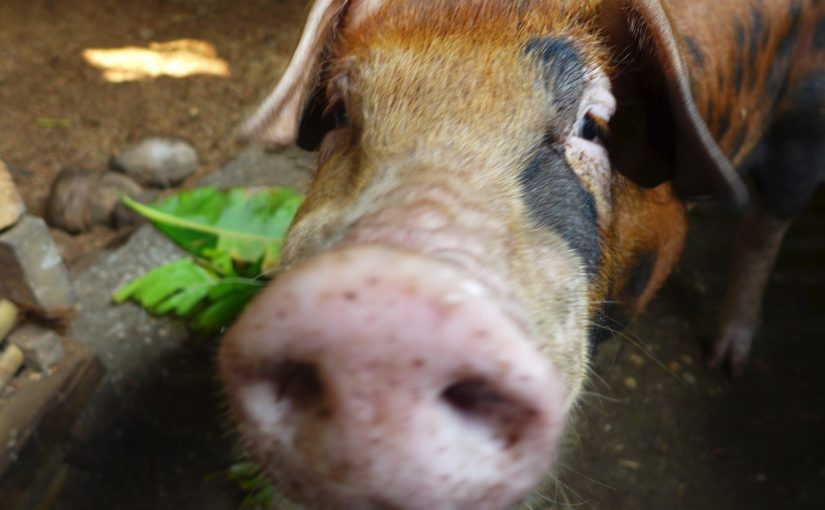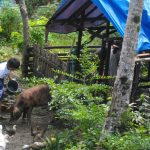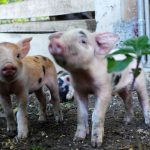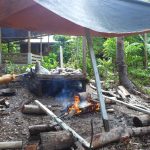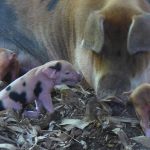Our first encounter with umbilical hernia was with Bootleg, now a 16-month old boar. It was at the age of two and a half months that I noticed something was wrong: Bootleg’s prepuce was getting considerably large. After some research online, I confirmed that Bootleg had umbilical hernia.
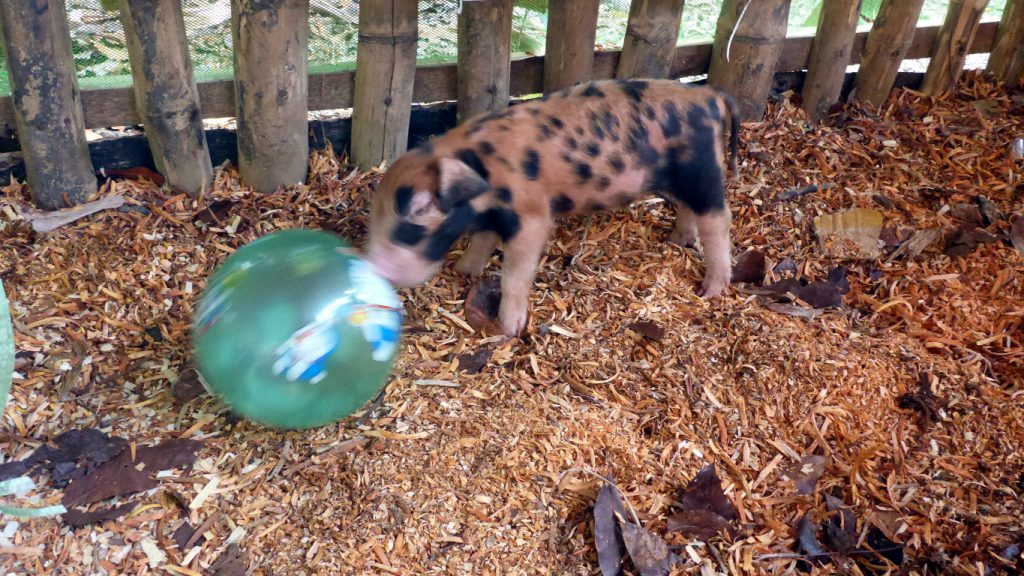
Generally, decisions are made on a farm as to whether to cull or keep an animal with hernia. If it is the latter, a policy of treatment is developed. I have no previous experience in these matters but I decided to keep Bootleg and find a way to repair his hernia.
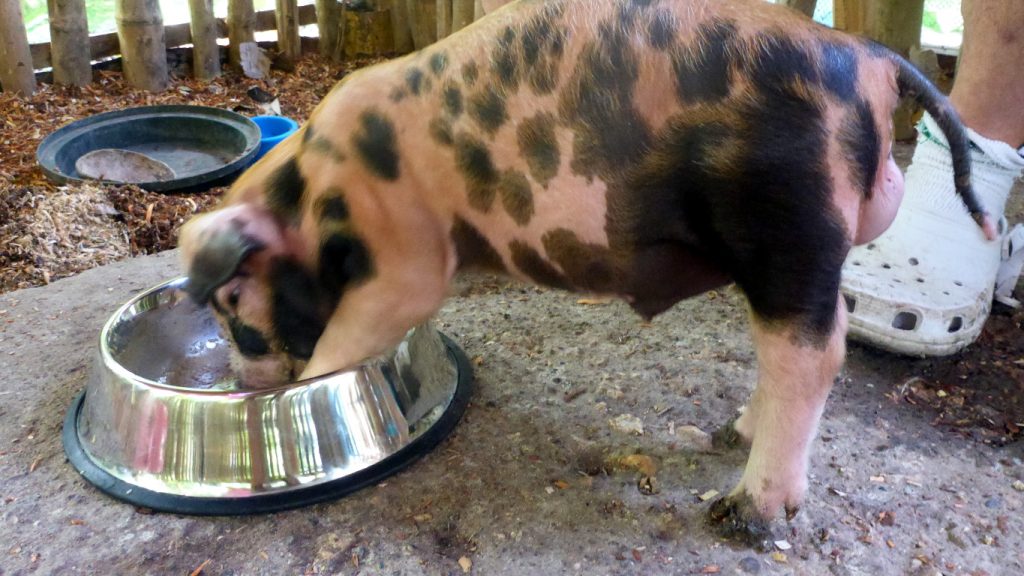
Surely, I noticed that Bootleg’s hernia became bigger after some vigorous playing and landing on his side. I came to understand better that an umbilical hernia is a tear in the abdominal muscles, where for some reason or other (genetic or environmental or both) the muscles in that area are weak. Stress and other such activities may cause the tear to become bigger.
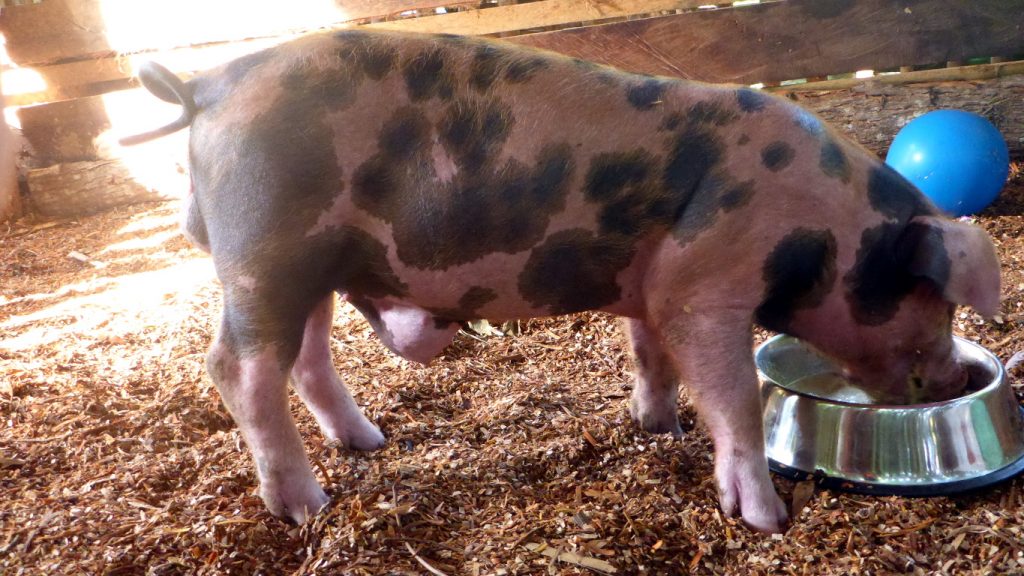
I rang up the Office of the Provincial Veterinarian looking for someone who can repair umbilical hernia. I was advised that hernia is generally untreated in slaughter pigs. However, because I insisted, I was brought into contact with a veterinarian who could perform the hernia repair surgery.
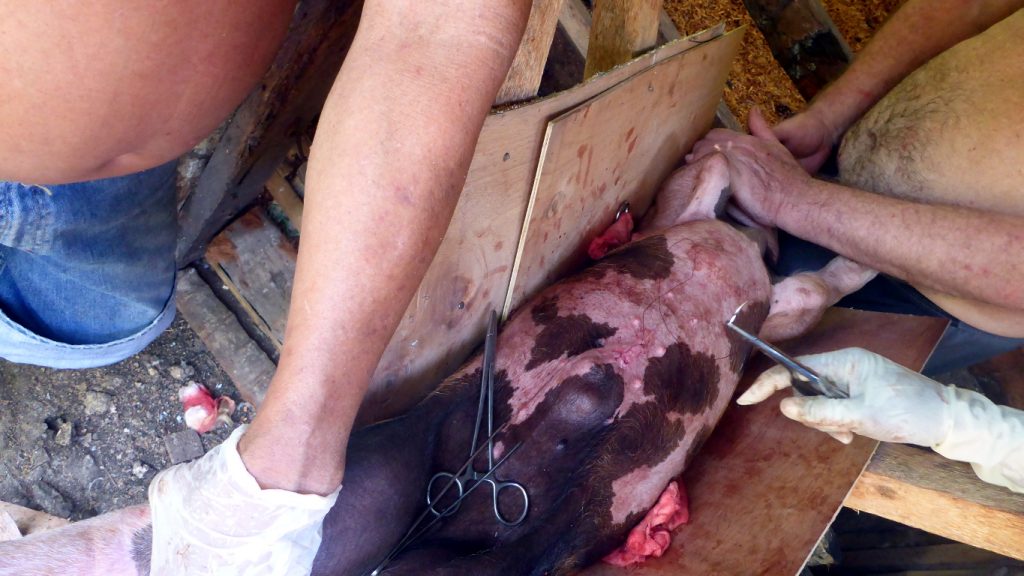
The surgery was performed on site. I administered all post-operative treatment with care. Bootleg was kept in a fairly large pig pen that had a soft dry bedding. I monitored his food and drink and for the next two months, fed him small amounts at frequent intervals. In the first two weeks, the hernia appeared to become larger. This should cause no alarm because this is actually swelling after the surgery. In three to four weeks, the hernia was considerably smaller.

During the surgery, the veterinarian noticed the presence of two tumours about the size of quail eggs. His prognosis was not good. He did not remove the tumours worrying that they may be cancerous and could spread if cut.

So, while Bootleg’s hernia did not continue to grow in size, it was the tumours that became bigger. As he matured, hormonal changes in his body triggered the growth of the tumours, both located in the prepuce.
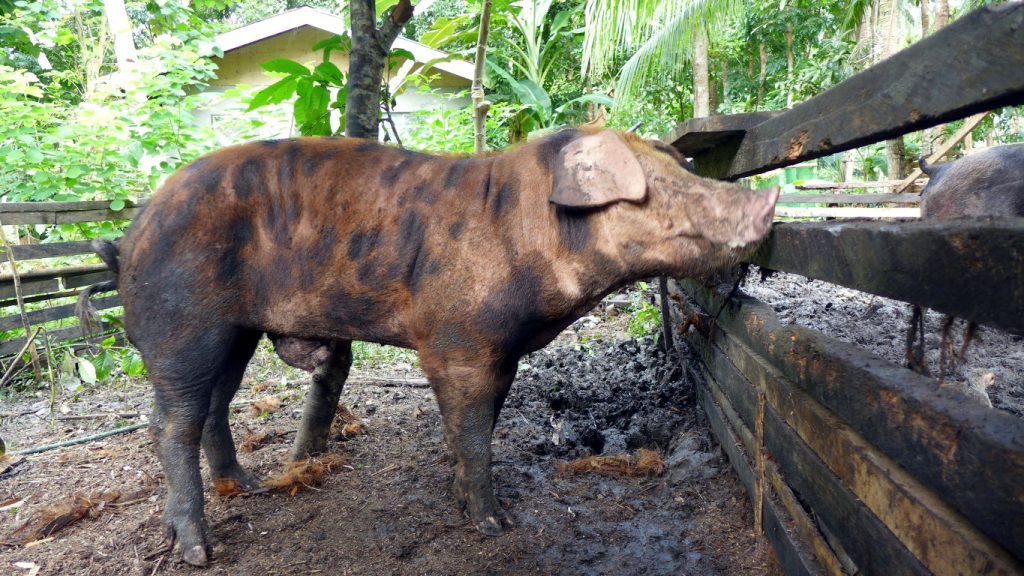
At the age of nine months, Bootleg successfully mated with one of our gilts, Number One. Because of the size of Bootleg’s hernia and tumours, I had to assist him in mating. The result are eight beautiful healthy piglets. I continue to monitor these piglets for signs of hernia. So far, only one piglet, Pinky, appears to have umbilical hernia. It is something that I noticed upon birth – the umbilical cord of this particular piglet showed a light colour flesh protruding where the umbilical cord is attached to the abdomen. This makes me wonder if in this case, umbilical hernia is genetic. Or perhaps while in the womb, Pinky’s umbilical cord got tangled with another pig and got pulled, tearing and weakening the abdominal muscles. Certainly a possibility.
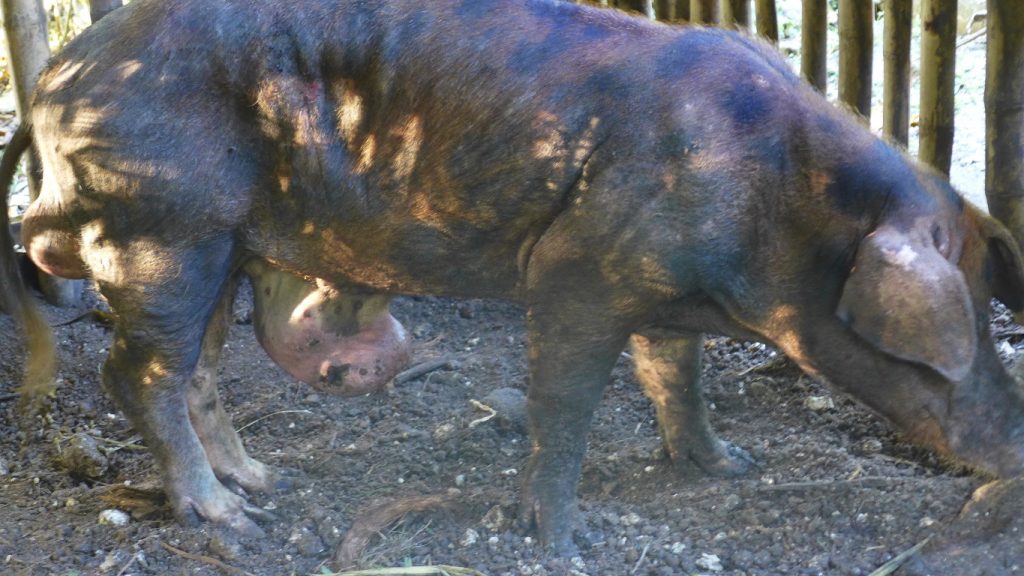
Bootleg continues to be a very active and happy boar. I would not consider him to be of the best of health but he is considerably happy despite his conditions. The tumours in his prepuce are quite enormous now and mating is impossible. I cannot assist in mating anymore because the weight of the boar as well as the weight of the tumours is just too much for me.
While Bootleg is no longer useful as a breeding boar, he serves the critical purpose of a teaser boar. He stays with two gilts and one sow and through him we are able to know if the pigs are in standing heat. If there is standing heat, we call Ogie to administer artificial insemination. Through Bootleg, we are also able to have boar exposure for the gilts and the sow, enabling oestrus.
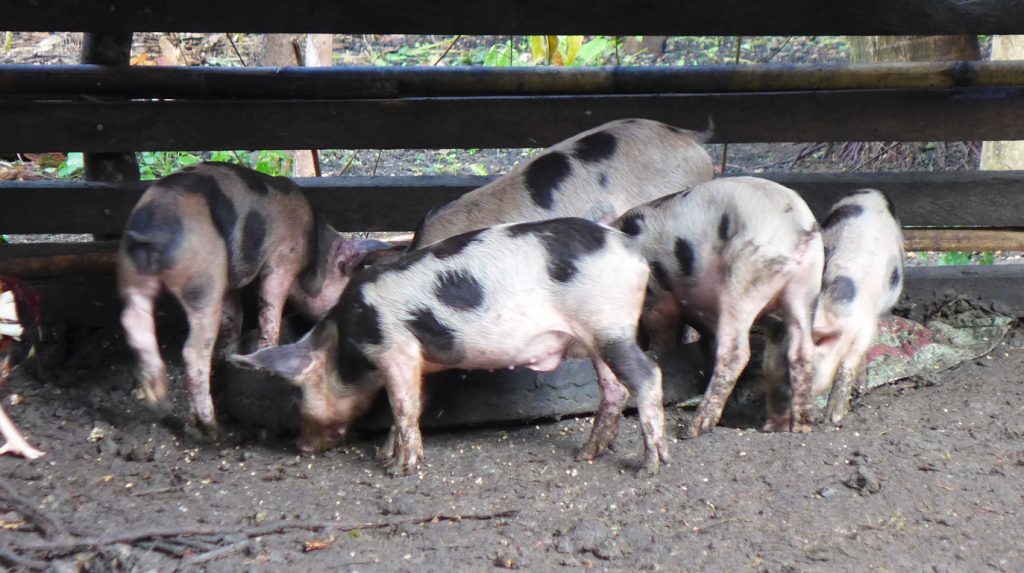
A second experience with umbilical hernia was with a female pig called Blackie. I bought Blackie from a neighbour and noticed at the age of 5 weeks that Blackie may have umbilical hernia. You can determine this by palpating or feeling the belly of the pig with the palm of your hand. If you feel that there is a lump there and that when you press with the tip of your finger, you can feel that there is a small hole, then that is most likely umbilical hernia. I find that it is easier to determine this in female pigs than in male pigs.
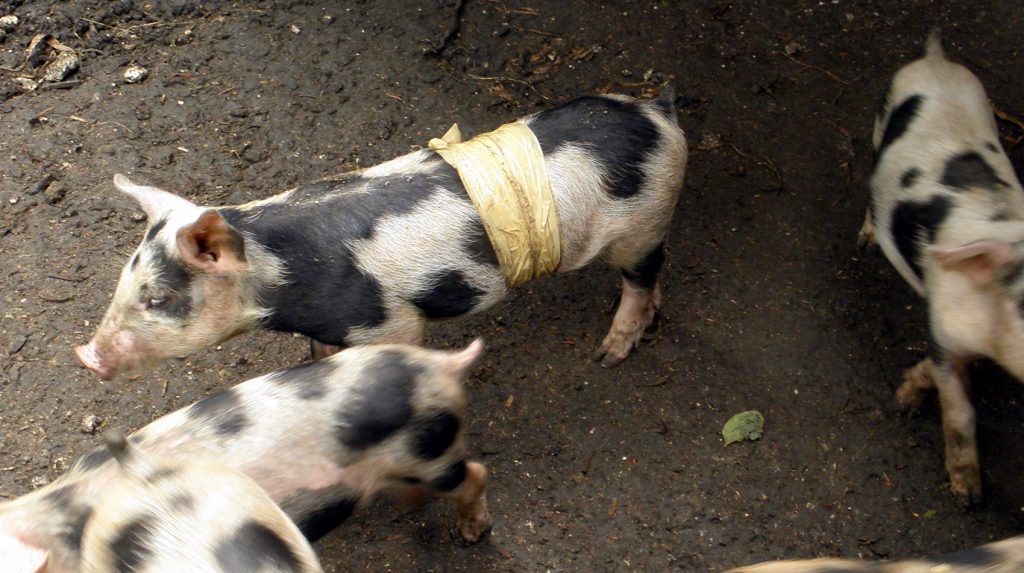
This time, we opted not to have hernia repair surgery. Since Blackie is female and there is not the prepuce that will get in the way, we decided to stop Blackie’s hernia from growing by using a binder. We devised a wide variety of binders – from duct tape to corsets. All of that failed. All binders quickly wore out. In fact, I feel that the process of lifting and restraining Blackie has caused more harm. The stress would have cause the hernia to tear even larger.
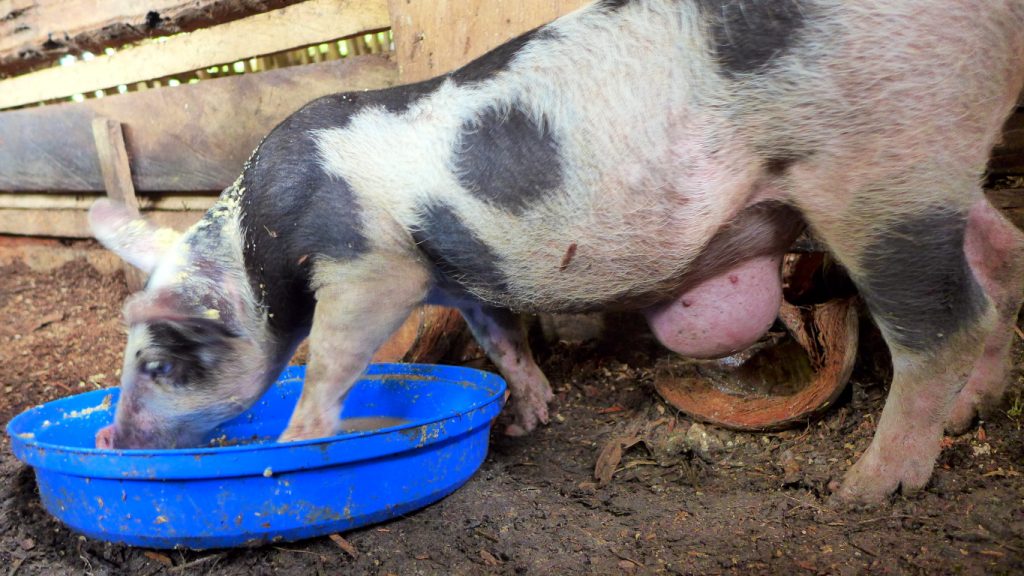
We decided to separate Blackie from the other pigs so as not to cause an accident that could damage her hernia. If that happened, we would have to deal with treating wounds which could become infected. Not wanting Blackie to be completely isolated, we kept her in a fenced area inside Bootleg’s pen. This was what we called The Hernia Ward.
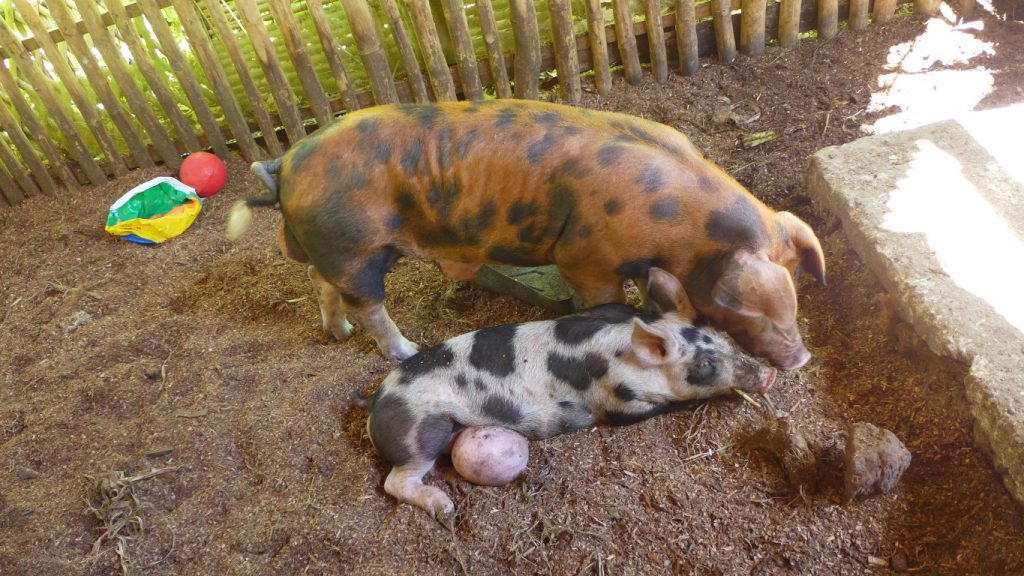
It was an excellent decision. As Blackie matured, she encouraged Bootleg to mature as well. This sort of exposure enabled Bootleg to become the unrelenting but gentle boar that he is today.
Blackie’s hernia continued to grow, at least, it didn’t grow so much that it touched the ground. Again, that would be disastrous since friction against the ground could cause wounds and infections. Although her hernia was huge, Blackie didn’t seem to mind it too much. She wormed her way through small gaps in the fence and through holes dug in the ground, to be with Bootleg.
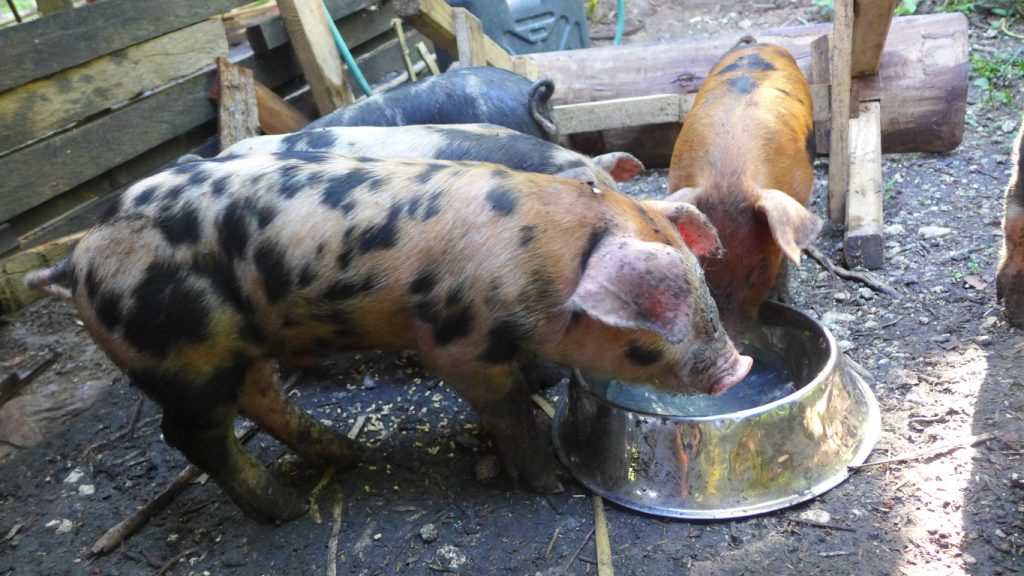
Our third hernia case is the male piglet, Pinky. Pinky is now three months old and his hernia is considerably smaller than Bootleg’s or Blackie’s hernia at two months old. Perhaps this is because of good management after previous experiences. I don’t feed our pigs large amounts of food and instead try to provide forage material such as coconuts, fruits and vegetable trimmings, cut forage crops, banana leaves, etc. This is beneficial for Pinky so he does not gorge and his guts will not fall out of and get trapped in the hernia hole. Pinky also gets plenty of exercise so as to strengthen his abdominal muscles. Pinky stays with his brother Brownie, which is important since pigs are social animals and become depressed if they are isolated.

With these experiences, I think that it is best for us to adopt a no-intervention policy with regard to umbilical hernia in pigs. But this is not mere no-intervention; this should be accompanied by a conscientious feeding program and the provision of a healthy environment and social life for the pigs.
So yes, there’s life after hernia. 🙂
